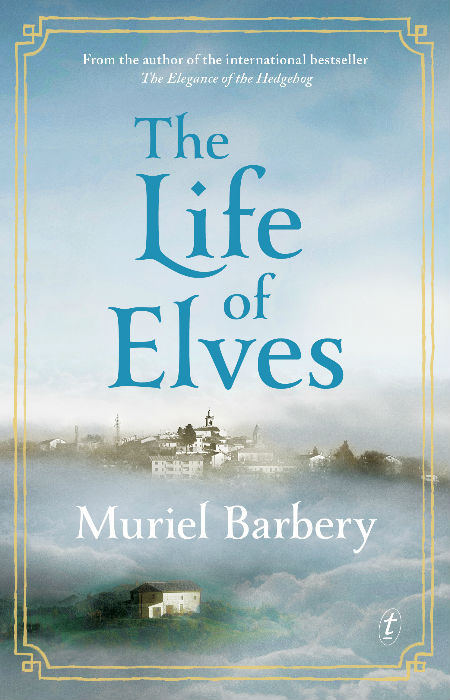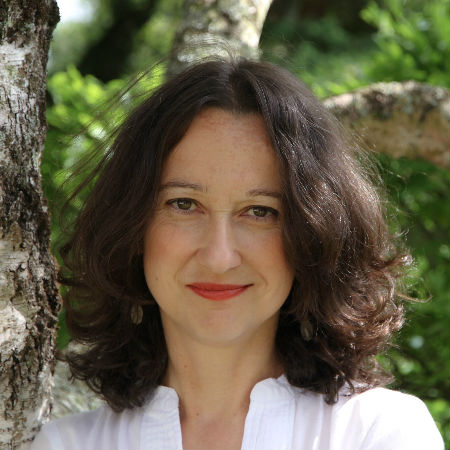
For most people in the heavily secular 21st century, the world begins and ends with the things we can touch, see and taste.
We live, as Madonna observed, in a material world and the majority of us are content with boundaries that are physical and see no need to venture beyond that into a world where elemental, spiritual or supernatural forces are at work.
Muriel Barberry is not one of those people.
In her novel, The Life of Elves, she explores what happens when an otherworldly realm, in this case one populated by the magical creatures of the title, intersects with our far more mortal world at an indeterminate time in our history – though references are made to major cataclysmic wars so the mid-twentieth century is a possibility – with far reaching effects.
It turns out, and this may disappoint those who believe mystical beings to be removed from the most base of human instincts and action, that elves are as warlike and prone to violence as we are.
Their breach of the boundaries between our two worlds comes down to internal political maneuvering so fierce and uncompromisingly virulent that the only way to deal with it is come marching into our realm.
“She played until nightfall. Then a great silence cloaked the vaults of the church where a shipwrecked piano had come to her in the summer of of her eleventh birthday. You see, this is a tale, of course, but it is also the truth. Who can unravel these things? Not anyone, in any case, who heard the story of the little girl found in an isolated village in Abruzzo between a country priest and his ignorant old housekeeper. All we know is that her name was Clara Centi and that the story did not end there …” (P. 37)
How the Inner Elfin Council accomplish this is by seeding our reality with operatives, people on the right side of elfin politics who want humanity to remain untroubled by the more aggressive poseurs among the elves who want nothing less than our annihilation.
Not so cutely magical now, are they?
These operatives oversee two eleven-year-old girls, Maria in France and Carla in Italy, who are seen by the Inner Elfin Council as the two people capable of creating a bridge between two very different realities by virtue of the fact that Maria is an elf who appears human (a rare thing indeed Barberry makes clear) while Carla is the child of a human and their elfin lover.
Together these two supremely gifted girls can bring about a harmony between the elfin predisposition to connection to the natural world (of which Maria is most talented) and the artistic inclinations of humanity, represented by Carla’s prodigious piano-playing ability which is so flawlessly innate that she can play music mere seconds after hearing it or seeing the sheet music.
Barberry has a real gift for evoking how otherworldly Maria and Carla are but also how groundedly human they are too, each child receiving extensive poetic descriptions of who they are, how they see the world and how others see them and are affected by them.
It is quite beautiful and enchanting stuff and adds a real richness to The Life of Elves.

Alas, what is the book’s greatest strength is in many ways its greatest weakness.
While these near-mystical elements are a delight to read, aided by the Alison Anderson’s deft translation from the original French, they are so extensive and so indulged that there is a gulf created between reader and characters, and thus by extension to the narrative itself.
It’s a story that should be so compellingly immersive and so emotionally resonant that you can barely tear yourself away from the pages.
And yet, for all its fantastically, exquisitely well-described elements, there is a sense of remoteness from proceedings so pronounced that while the action ramps up and up and up, and Clara and Maria come into their true destiny, you almost cease to care.
In the final third of the book, when all the two worlds mystical chickens come home to roost in fairly spectacular fashion, you should have nothing but rapt attention to what is taking place.
“Something snapped inside Maria, as if walls of frost shattered silently then came to rest on a carpet of velvet, glinting with deep shards of mercury. There were stars and flights of birds slipping soundlessly through a sky of drowned ink, and a scream carrying away the secret of the birth that had blessed her with the power to relieve old women of their burdens. Her tears dried. She looked at Eugénie, at the furrows pencilled by time onto her beloved old face, and gently stroking her hand, she smiled faintly in turn because she saw the joy in the auntie’s heart, and she was learning what it meant to be a soul that had been relieved of its crosses.” (P. 137)
After all, here are too young girls, not of this world and yet very much of it, who have the fate of humanity in their hands, aided by elfin allies who want only the best for us, and yet, you drift off at times, not really caring as much as you should for what happens to them.
It is a great pity that the artistic merit of the book, which surges with lusciously poetic writing and deeply evocative descriptions of people and the lives the lead, overshadows any abiding connection to the story.
Admittedly, it can be hard getting these two elements to work in harmony but Barberry has proven in books like The Elegance of the Hedgehog and Gourmet Rhapsody that she has a gift for emotionally resonant writing that unfolds like a rare and affecting work of art.
Alas, that near-perfect marriage of art and humanity doesn’t quite work in The Life of Elves which is a pleasing read in many ways but which fails to leave impression, either transient or lasting, putting forward a story that is epic in scope and rich with imagination but which ultimately fails to deliver quite as you might expect it to.